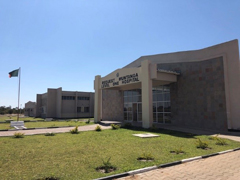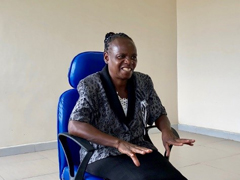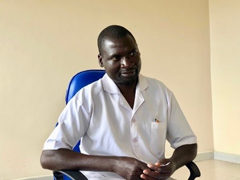Project News
2019-10-02
DSAP approach 4: Strengthening PPH in Kalomo
Maternal death is one of the priority issues in Zambia. In 2015, 224 mothers died per 100,000 live births.[1] Postpartum Hemorrhage (PPH) is one of the main causes of maternal mortality. It is accompanied by bleeding among normal deliveries; however, PPH is generally defined as "blood loss of 500ml or more occurring within 24 hours after delivery". Maternal death is most likely to occur within 24 hours after delivery. Many of those cases can be prevented by managing uterine contractions at the appropriate time during delivery. It is recognised that atomic bleeding is the most common cause of massive bleeding.[2]
This Project provided training to reduce maternal mortality due to PPH in Kalomo District. The District Health Office provides training on Emergency Obstetric Neonatal Care (EmONC), which requires a two-week long training. It has been relatively inefficient that such lengthy EmONC training is costly and enables to take only a few participants at a time. Therefore, the Project supported the District Health Office in conducting PPH training for 12 nurses and midwives. Then, these 12 trainees became trainers and conducted two-day training for 55 new participants from 30 health centres. By doing so, the Project was able to increase the number of nurses and midwives who completed the training while saving the training expenses. In Kalomo District, there were three maternal deaths due to PPH in 2017. After the training, no death occurred in 2018.
The Request Muntanga Level One Hospital in Kalomo District moved to its current location in 2018. Two nurses in this hospital received the training from the District Health Office and transferred their knowledge to their two colleagues. There were eight PPH cases occurred in this hospital last month but they were able to handle all the cases successfully.
Ms Ireen Chinyama, is a nurse working in the Department of Obstetrics and Gyneclogy in the hospital, also a lecturer at the PPH training that was conducted by the District Health Office. In this District, many mothers give birth at home, therefore, it often becomes too late at the time of abnormality. Ms Chinyama says, "It is necessary to find out the cause of the bleeding and confirm whether it should be referred to a hospital".
Ms Chinyama shared the case that occurred in a remote area 84 km away from the hospital. "A mother was trying to give birth at home. But she had too much bleeding so she went to a nearby health centre with her family. This health centre called me and I ran over a rough road for two hours by ambulance from my hospital. However, when I arrived, staff at the health centre had already removed the remaining placenta, pressed the bottom of the womb, and administered oxytocin. As a result of the immediate response by the PPH trainees, both the mother and baby were safe after all".
Mr Phillip Safuli works as a midwife in the Department of Obstetrics and Gynecology in the same hospital. After the PPH training, he has helped many mothers who caused postpartum bleeding. "There are cases that the PPH trainees may be transferred to another department. It is necessary to continue to provide training on a regular basis, including staff at the health centres", Mr Safuli concluded.
 Request Muntanga Level 1 Hospital, Kalomo District
Request Muntanga Level 1 Hospital, Kalomo District
 Ms Ireen Chinyama, Nurse
Ms Ireen Chinyama, Nurse
 Mr Phillip Safuli, Nurse
Mr Phillip Safuli, Nurse
Notes
- [1] Unicef Maternal and Newborn Health Disparities in Zambia, 2018
- [2] WHO recommendations for the prevention and treatment of postpartum haemorrhage, 2012
- About JICA
- News & Features
- Countries & Regions
- Our Work
- Thematic Issues
- Types of Assistance
- Partnerships with Other Development Partners
- Climate Change / Environmental and Social Considerations
- Evaluations
- Compliance and Anti-corruption
- Science and Technology Cooperation on Global Issues
- Research
- JICA Development Studies Program / JICA Chair
- Support for the Acceptance of Foreign HRs / Multicultural and Inclusive Community
- Publications
- Investor Relations
